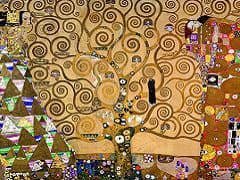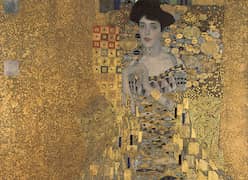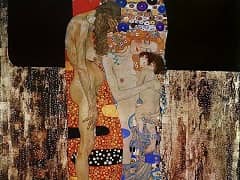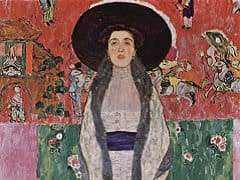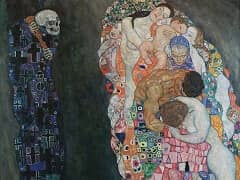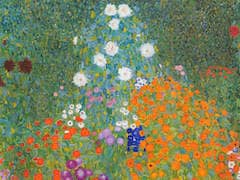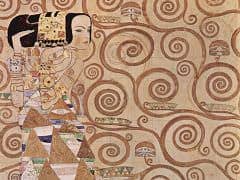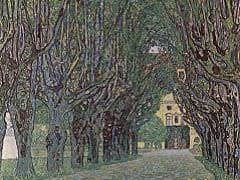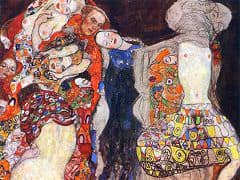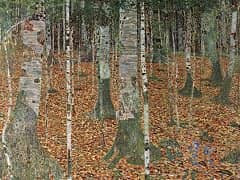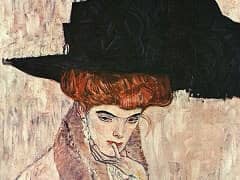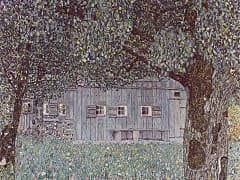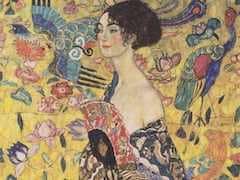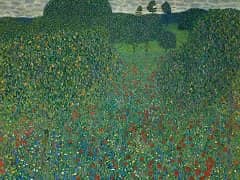Birch in a Forest, 1903 by Gustav Klimt
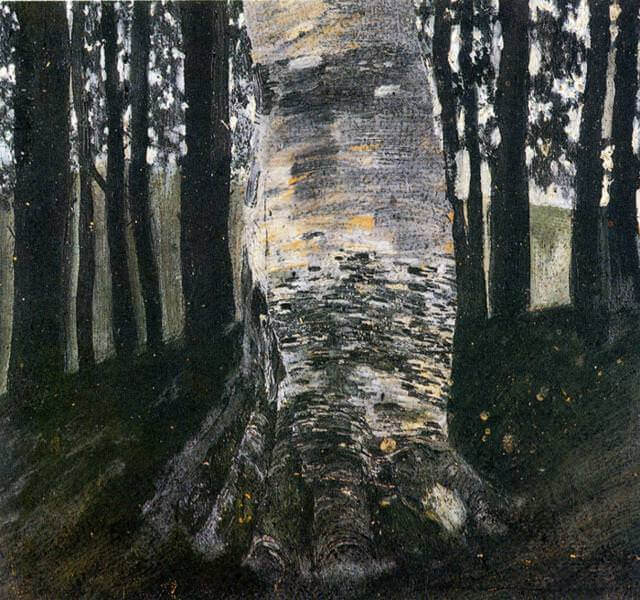
In another powerful and mesmerizing landscape, Birch in a Forest Klimt excels in balancing color and texture to construct depth, also insists on defining the painted surface as the
large ghostly tree trunk pushes forcefully forward. The subtle use of red-green color polarization creates a tonal vibrancy so that the main tree is projected out of the landscape.
As it looms up silvery translucent, the tree invokes reverse negative images of a black-and-white photograph. This could easily be mistaken for the work of a modern nature artist.
Klimt loved photography and used a camera to capture interesting effects. His interest in Stimmung, mood subjectivity, was enhanced by a telescope or a viewfinder, which was a cardboard box
with a square hole cut out, that enabled him to focus directly on highly concentrated areas of detail. This resulted in bizarre close-up, patterned squares of perspective, like miniature
snapshots of a grander panorama with timeless qualities of alienation and loneliness.
Usually Klimt would paint several times a day, rising early and returning for meals. Unlike his meticulously planned studio work, he would paint directly on to the canvas, often hiding the easel
in the bushes so he could return to work later.


